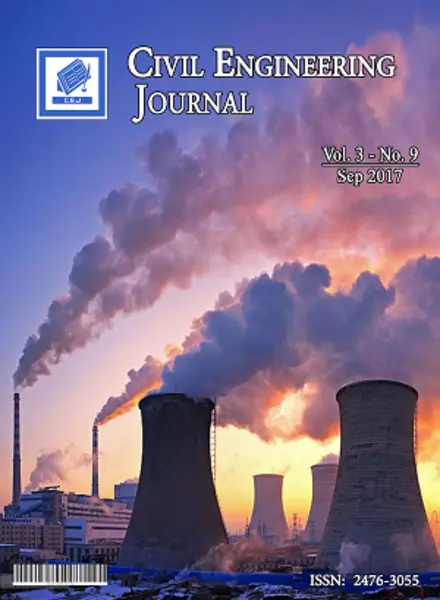-
evaluation of various brands of moisture meters in gypsum and wood substrates at a range of moisture contents
جزئیات بیشتر مقاله- تاریخ ارائه: 1400/08/01
- تاریخ انتشار در تی پی بین: 1400/08/01
- تعداد بازدید: 679
- تعداد پرسش و پاسخ ها: 0
- شماره تماس ژورنال: 982188779475ext.258
determining correct moisture content of wetted building materials and analysis of corresponding locations, orientations, and patterns is of imminent value to forensic engineers and building scientists. as many building damages relate to insurance claims and construction defect/ subrogation lawsuits, legal challenges to the accuracy of measured moisture content have arisen. the objective of this study was to independently establish the level of precision of common moisture meters used to quantify and measure moisture content in building components. the study tested four different brand moisture meters in gypsum and wood substrates at normal, high, and saturated moisture contents. the results were compared against laboratory obtained moisture content to assess the accuracy of each meter in the substrate and at which moisture content range. the study wetted wood and gypsum specimens to moderate and saturated conditions and measured the resulting moisture content with the four different brands of meters. control wood and gypsum specimens were not exposed to water and their moisture content was measured as is. all of the wood and gypsum specimens were subsequently sent to a laboratory and moisture content was calculated by the oven-dry method. the moisture content results measured by moisture meters were compared against the laboratory obtained data. data was averaged and plotted with moisture content of various specimens and visually analysed to determine which meters deviated from the laboratory data and at which moisture contents. data was also numerically analysed and graphed to quantify meter moisture content accuracy as compared to laboratory obtained moisture content. moisture meters should be used within the manufacturer specified range of moisture content and price may not be the best indicator of moisture meter accuracy. at low ranges of moisture content in wood and gypsum, all meters exhibited relatively small deviation from laboratory calculated values, while moderate and saturated conditions presented larger variations from laboratory moisture content. composite materials such as gypsum may be difficult to establish moisture content, as different materials such as the gypsum core and paper facing absorb and distribute moisture differently. all meters were successful in detecting wet conditions, but exhibited a lack of precision in determining exact values in moderate and saturated conditions. in this regard, meters may be improved as the industry demands not only detecting wet conditions but determining precise values at a full range of moisture contents. future studies may be limited to monolithic materials as oven dry method returns an average value of the respective paper and gypsum components in gypsum board specimens, and thus contained an inherent margin of error.
حوزه های تحت پوشش ژورنال
مقالات جدیدترین رویدادها
-
استفاده از تحلیل اهمیت-عملکرد در ارائه الگوی مدیریت خلاقیت سازمانی و ارائه راهکار جهت بهبود
-
بررسی تاثیر ارزش وجوه نقد مازاد بر ساختار سرمایه شرکت های پذیرفته شده در بورس اوراق بهادار تهران
-
بررسی تأثیر سطح افشای ریسک بر قرارداد بدهی شرکت های پذیرفته شده در بورس اوراق بهادار تهران
-
بررسی تأثیر رتبه بندی اعتباری مبتنی بر مدل امتیاز بازار نوظهور بر نقد شوندگی سهام با تأکید بر خصوصی سازی شرکت ها
-
تأثیر آمیخته بازاریابی پوشاک ایرانی بر تصویر ذهنی مشتری پوشاک ایرانی (هاکوپیان)
-
« جان » در ادبیات پهلوی
-
تاثیر ساخت پایه بر عملکرد سرریز پلکانی سد ژاوه
-
تغییر مکان نسبی قاب های خمشی بتن مسلح با شکل پذیری متوسط در سطوح عملکردی
-
تاثیر آنتی اکسیدان ها (ویتامین c,e) در کاهش میزان بروز پره اکلامپسی در خانم های شکم اول
-
تحلیل قاب خمشی فولادی تحت اثر برخورد با کامیون
مقالات جدیدترین ژورنال ها
-
مدیریت و بررسی افسردگی دانش آموزان دختر مقطع متوسطه دوم در دروان کرونا در شهرستان دزفول
-
مدیریت و بررسی خرد سیاسی در اندیشه ی فردوسی در ادب ایران
-
واکاوی و مدیریت توصیفی قلمدان(جاکلیدی)ضریح در موزه آستان قدس رضوی
-
بررسی تاثیر خلاقیت، دانش و انگیزه کارکنان بر پیشنهادات نوآورانه کارکنان ( مورد مطالعه: هتل های 3 و 4 ستاره استان کرمان)
-
بررسی تاثیر کیفیت سیستم های اطلاعاتی بر تصمیم گیری موفق در شرکتهای تولیدی استان اصفهان (مورد مطالعه: مدیران شرکتهای تولیدی استان اصفهان)
-
تاثیر نقوش سفال های شهر سوخته بر سوزن دوزی بلوچ
-
رقابت در بازار محصول، بهره وری و اشتغال
-
بررسی شاخص های مؤثر بر سیستم مدیریت پسماند با رویکردی بر شیوه های جمع آوری و دفع زباله های شهری
-
مبانی و کیفرگذاری تکرار جرم با رویکرد قانون کاهش مجازات حبس تعزیری 1399
-
بررسی مؤلفه های بازدارنده مشارکت و فعالیت زنان در عرصه محیط زیست کشور از دیدگاه کارشناسان و فعالان


سوال خود را در مورد این مقاله مطرح نمایید :